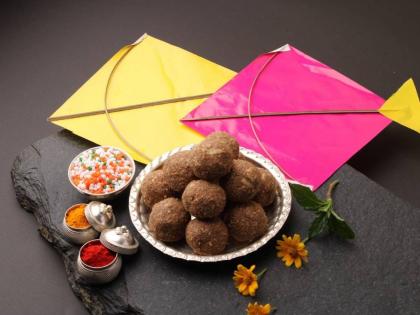Makar Sankranti 2025: Date, Shubh Mahurat Timing, Puja Vidhi and Significance for a Prosperous Celebration
By Lokmat English Desk | Updated: January 4, 2025 19:55 IST2025-01-04T19:54:04+5:302025-01-04T19:55:59+5:30
Makar Sankranti, the first major festival of 2025, falls on January 14. It is a celebration of the sun's ...

Makar Sankranti 2025: Date, Shubh Mahurat Timing, Puja Vidhi and Significance for a Prosperous Celebration
Makar Sankranti, the first major festival of 2025, falls on January 14. It is a celebration of the sun's entry into Capricorn, marking the beginning of Uttarayan, the sun's northward journey. This festival holds great cultural, religious, and scientific significance. In addition to its cultural importance, Makar Sankranti has several health benefits. The cold winter months often cause the body to become stiff, and blood circulation can slow down. To counter this, foods rich in fats, such as sesame seeds, are consumed, which help in maintaining warmth and nourishment. Foods like Til Gul ladoo and Gul poli are considered ideal for the season in Ayurveda.
Another major tradition associated with the festival is kite flying, which not only brings joy but also encourages sun exposure, aiding in the absorption of sunlight during the colder months. In Maharashtra, the festival is celebrated over three days: Bhogi on January 13, Sankrant on January 14, and Kinkrant on January 15. The term "Sankrant" refers to the transition of the sun into a new zodiac sign, which is observed with acts of charity and bathing in sacred rivers, especially the Ganges.
Makar Sankranti in Gujarat is a lively festival celebrated with great enthusiasm. A key highlight of this festival is kite flying, known as Uttarayan, where colorful kites fill the sky as families and friends compete in a friendly manner. Traditional sweets such as tilgul, undhiyu, and chikki are prepared, symbolizing warmth and good health. In some regions, bonfires are lit to celebrate the harvest season, accompanied by folk songs and festive foods. Cultural fairs in cities like Ahmedabad feature traditional music, dance, and handicrafts. It is also common to exchange sweets and engage in charitable activities during this time. Overall, Makar Sankranti strengthens community bonds and brings joy through its vibrant traditions and celebrations.
Makar Sankranti is known by various names across India, including Pongal in Tamil Nadu, Bhogali Bihu in Assam, and Khichdi Sankrant in Bihar. This festival, which marks the sun's transition from Sagittarius to Capricorn around January 14-15, emphasizes its agricultural roots through offerings to deities and sharing of grains and fruits. It aligns with the English calendar and this year coincides with Pushya Nakshatra. The celebration of Uttarayan is central to Makar Sankranti, where traditional foods like sesame seeds and jaggery are enjoyed, and black clothing is worn for warmth. Other regional names include Paush Sankranti in Bengal. Bathing and charitable acts are considered auspicious during this time.
Also Read: Makar Sankranti 2025: Tips to Protect Yourself from Manja and Kite Strings While Riding a Bike
Auspicious times for Makar Sankranti 2025:
Sankranti Punyakal: 08:54 am to 04:54 pm
Abhijit Muhurta: 12:09 pm to 12:51 pm
Vijay Muhurta: 02:15 pm to 02:57 pm
Godhuli Muhurta: 05:43 pm to 06:10 pm
Amrit Kaal: 07:55 am to 09:29 am
Open in app